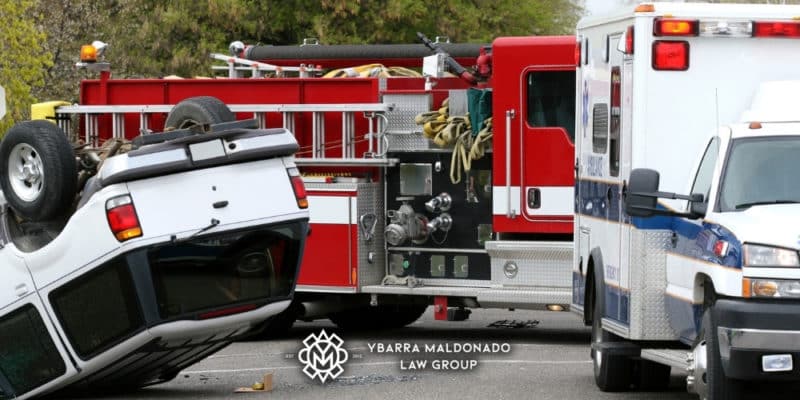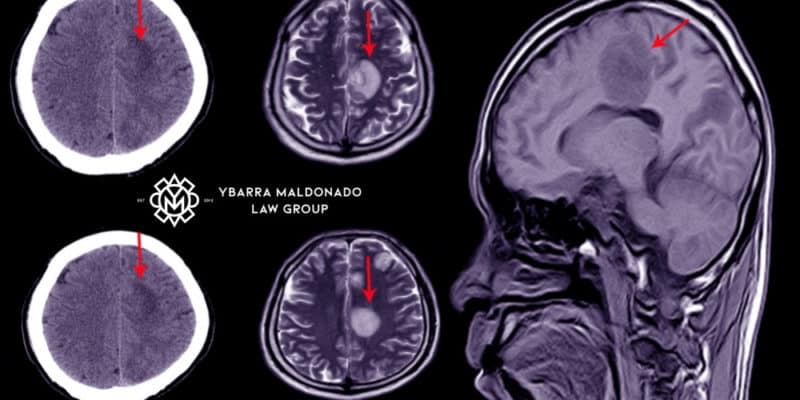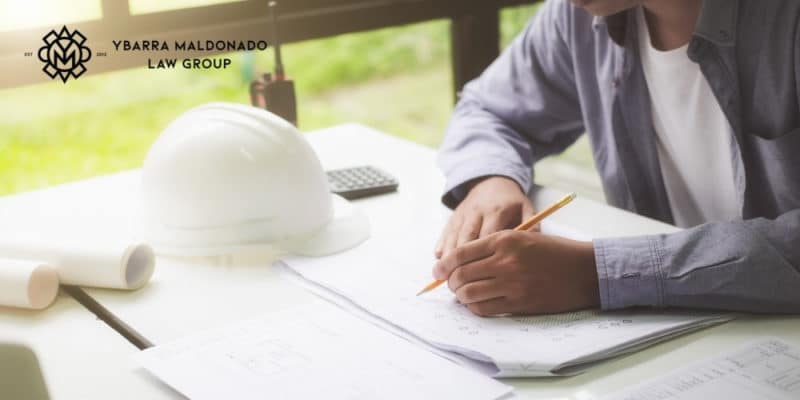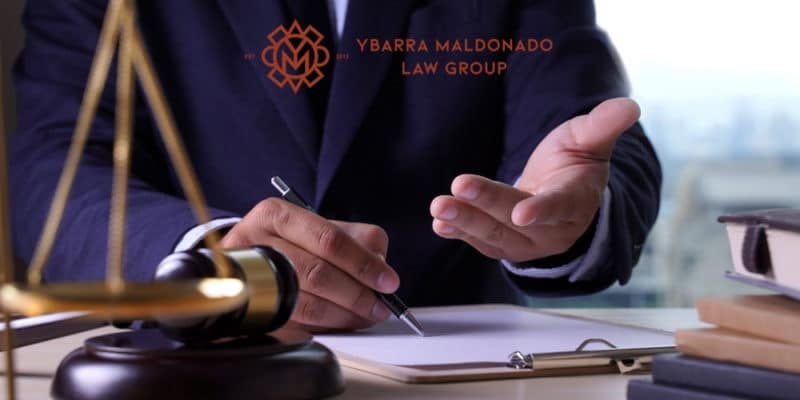T-BONE ACCIDENT LAWYER PHOENIX
PRACTICE AREAS
DON’T HESITATE TO REACH OUT TO US!
Our Law Firm is committed to becoming the best Law Firm for Latino, migrant, and Spanish speaking communities in Arizona.
T-Bone Car Accidents in Arizona
Any type of car accident has the potential to be fatal or cause severe injuries when negligence is involved. However, certain types of car accidents are much more likely to result in serious injuries or even a wrongful death claim. T-bone accidents, also known as side-impact collisions, are among the most common types of fatal vehicle crashes that we see in Arizona. If you suffered injuries as a result of a T-bone car accident, you need a qualified Phoenix personal injury lawyer on your side.
At Ybarra Maldonado Law Group, we act as staunch advocates for the families we serve. We understand that, after a T-bone collision, you may feel unsure of where to turn. We’re here to help families and victims of car accident cases fight for their right to just compensation. It can be difficult to prove liability without the skills of an experienced Phoenix car accident attorney. Our law firm pledges to give you the means to fight for your legal rights. To schedule a free consultation with us, please call our Phoenix law office at 602-910-4040 today.
What Is a T-Bone Car Accident?
A T-bone collision occurs when the front of one vehicle strikes the side of another vehicle, forming a “T” shape. They happen for a variety of reasons, but negligence is often at the heart of these dangerous car crashes. Another name for a T-bone accident is a side-impact collision.
Many people associate T-bone accidents with traffic intersections. This is partially because many T-bone crashes occur at a stop sign, a green light, or a red light. However, they can even occur on highways and other busy roadways. For example, if a driver loses control of their vehicle, causing it to skid sideways, this could result in a broadside collision.
A T-bone accident can even happen in a busy parking lot. Let’s say one driver backs out of their parking space, unaware that the other vehicle is behind them. If the rear of the first vehicle strikes the side of the other car, this is considered a T-bone accident.
T-Bone Car Accident Statistics
A T-bone collision is one of the most deadly types of collisions. In fact, data from the National Transportation Highway Safety Administration reveals that T-bone collisions account for 13% of all accidents in the country. Additionally, these same crashes account for around 18% of all fatal car accidents.
Approximately 8,000 people die each year as a result of side impact accident cases. The number of deaths per year has been steadily increasing due to a few reasons. Firstly, travel speeds on roads and highways have increased. Secondly, more SUVs are on the road now than there were previously. Thus, T-bone accident cases tend to be more deadly than other types of crashes. But why is this? What makes a T-bone crash so deadly to passengers?
Why Are Side Impact Accidents So Dangerous?
Let’s first consider the differences between a head-on collision and a T-bone collision. When a car is struck from the front, there’s a sizable buffer zone between the front of the car and the car’s occupants. This is called the crumple zone, and it also applies to the rear of the car. The sides of a car, however, are much thinner than the front and the rear. This means that the occupants of the vehicle have far less protection between themselves and the approaching vehicle.
Additionally, a T-bone crash often results in broken windows and crushed doors, which can also lead to injury. This lack of protection on the sides of vehicles is what primarily causes T-bone accident injuries, as the occupants of the vehicle absorb much more of the blow. While nearly any traffic accident can result in injuries, a T-bone accident is much more likely to result in injuries or even death.
How Do T-Bone Accidents Happen?
As with any car accident case, there are a number of different factors that can contribute to a T-bone accident happening. While negligence is often at the heart of these accidents, other circumstances can also contribute. Below, we outline some of the most common causes of T-bone accidents.
- Running a stop sign or a red light: Sometimes, a T-bone accident can happen after one driver runs a stop sign or a red light. If another vehicle is already proceeding through the intersection because they had a green light or the right of way, this could result in a T-bone car accident.
- Loss of control of the vehicle: If the at-fault driver loses control of their vehicle, this can also cause a T-bone accident. When a loss of traction or control occurs, the vehicle could skid sideways into oncoming traffic. This could result in a T-bone collision.
- Reckless or distracted driving: A T-bone accident case could also result from the other driver’s negligence. Running a traffic light, making a wrongful left turn, ignoring stop signs, and drunk driving are all examples of reckless driving.
Types of T-Bone Car Accident Injuries
Due to their serious nature, T-bone collisions have the potential to cause not only vehicle damage, but also serious injury to any passengers or drivers involved. Below, we list some of the most common injuries sustained by victims in T-bone accident cases.
- Traumatic brain injury (TBI)
- Internal injuries
- Concussions
- Whiplash
- Bone fractures
- Spinal cord injury
- Chronic pain
- Nerve damage
- Paralysis
- Amputation
- Crushing injuries
- PTSD related to the accident
This is not a comprehensive list of all possible injuries that could occur in a T-bone accident. If you suffered other injuries when your accident occurred, our personal injury attorneys are here to help you fight for just compensation.
Who Is at Fault in a T-Bone Car Accident?
As with other car accidents, it is possible for the drivers of all vehicles involved to be partially liable for the accident. Maybe one driver was completely at fault, or maybe both drivers played a role in causing the crash. In general, we will begin by determining who had the right of way at the accident scene. If you were making a left turn at a green light and the other driver blew through a red light, causing an accident, they will be at fault.
It’s important to note, however, that the driver of whichever car hit the other car is not always automatically at fault. Below, we outline potentially liable parties after a T-bone accident.
The Drivers Involved in the Crash
As we stated previously, any driver involved in the crash could be held liable for the damages. More than one of the drivers involved in the crash can receive at least part of the blame. Another driver could be held liable after an accident if they were engaging in negligent behavior, such as speeding, impaired driving, or distracted driving.
Vehicle or Parts Manufacturers
If vehicle defects were the cause of the accident, the designer or manufacturer of the defective parts could be held liable for the accident. For example, let’s say that your brakes stop working while you’re driving, and an accident occurs. In this case, you can sue the manufacturer of the defective brakes under product liability laws.
Other Drivers
Even drivers who were not involved in the accident could be held responsible. Maybe the other driver was acting recklessly, and they caused an accident. Even if they weren’t directly involved in the accident, they could still be held liable for the damages.
Civil Engineers or Urban Planners Who Designed the Road
Other potentially liable parties include civil engineers who design the roads and highways we drive on. You can probably think of at least one dangerous intersection in your city, and you can probably point out why it’s so dangerous. Below, we list some of the road features that planners and designers have control over. By overlooking some of these features, civil engineers could potentially create a dangerous intersection.
- Poor signage: When an intersection is busy, it’s important to have very visible signage and signals. If a road designer fails to implement adequate signage and signaling, they could be held liable for accidents that occur there.
- Confusing design: Maybe the roadway is simply too difficult to interpret. Driving is intended to be a fairly passive activity. The more confusing the road, the more time and thought it takes to figure out how to proceed. This delay could result in deadly crashes.
- Poor visibility: It’s important for drivers to be able to see oncoming traffic. This allows them to make informed decisions about how to proceed. If a civil engineer designs an intersection with poor visibility, they could be held liable for the accident.
How Can an Attorney Help Me Prove Liability in a T-Bone Accident?
After an accident, the first thing you should do is seek medical attention. Even if you don’t think you have any injuries, you may find that you discover them after your adrenaline has worn off. It is better for injury victims to receive medical attention sooner rather than later. This helps your car accident attorney to tie your injuries more closely with the accident.
After this, we highly recommend seeking advice from an experienced personal injury attorney. In order to prove liability in your personal injury case, we will gather evidence in the form of your medical bills, the official police report, your medical records, and records of your lost wages. Fighting against an insurance company on your own can feel daunting. Let us help you fight for your legal right to just compensation.
Types of Damages in T-Bone Car Accidents
There are three main types of damages in a T-bone accident case. These are economic damages, non-economic damages, and punitive damages. We outline each of these below.
Economic Damages
Economic damages are quantifiable, meaning they have a dollar value that can be calculated. Examples of these damages include the following.
- Current and future medical bills
- Current and future lost wages
- Vehicle repair costs
- Physical therapy costs
- Loss of earning capacity
- Wrongful death costs, such as burial and funeral expenses
- Medication costs
Non-Economic Damages
Non-economic damages are a bit more difficult to assign a value to, as they are not quantifiable. Below, we list some of the most common examples of non-economic damages.
- Pain and suffering
- Loss of consortium
- Loss of enjoyment of life
- Mental and emotional anguish
- Scarring or disfigurement compensation
Punitive Damages
In Arizona, courts allow plaintiffs to be awarded punitive damages when the defendant was found to have acted with an “evil mind.” In order to satisfy this element, your attorney must prove the following.
- The other driver had feelings of ill will toward you and intentionally wanted to cause you harm.
- They knew they were engaging in an unsafe act and that they were likely to cause someone harm but still did it.
Keep in mind that it is very rare for a court to award punitive damages. Generally, these cases involve one driver intentionally hitting another with their car. It could also include incidents of road rage.
T-Bone Car Accident FAQs
What Happens to Your Body in a T-Bone Car Accident?
This largely depends on the severity of the impact and the accident as a whole. The more force the impact has, the more serious the injuries are likely to be. In a minor accident, you may experience whiplash or a mild concussion. In a major accident, you may suffer a traumatic brain injury that changes your life forever.
What Percentage of T-Bone Accidents Are Fatal?
On a national scale, approximately 18% of all T-bone crashes are fatal. Fatal car accidents involve the death of at least one person, if not multiple. Head-on collisions are similarly deadly, and the two often contend for the top spot in terms of fatalities each year.
Fight for Just Compensation with Ybarra Maldonado Law Group
If you suffered injuries when an accident occurred, it is incredibly important to contact a qualified Phoenix car accident lawyer as soon as possible. At Ybarra Maldonado Law Group, we serve as advocates for the families who reach out to our law firm. We will ensure that we gather all evidence relevant to your case in order to build the strength of your case. We will also fight to ensure that your rights are protected. You deserve full and fair compensation for your injuries. We’re here to give you the tools necessary to fight for those rights. To schedule a free consultation with us, please call our Phoenix law firm at 602-910-4040 today.





